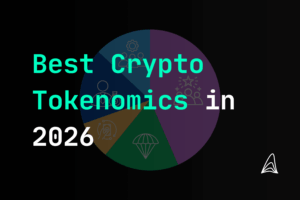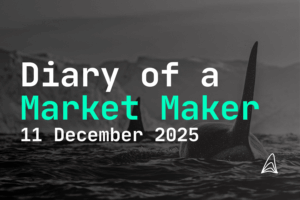
- Jakob Brezigar
- Updated: July 31, 2025
- Reading time: 6 min
What Are Spreads: Key Definitions, Types & Importance

Spreads are foundational to trading dynamics—especially in crypto markets where liquidity and execution costs matter. In finance and digital asset trading, a spread generally refers to the difference between two related prices or rates, most commonly the bid–ask spread: the gap between what a buyer is willing to pay (bid) and what a seller is willing to accept (ask).
What exactly is a “spread” in finance and crypto trading?
- Spread (absolute) = Ask price − Bid price
- Percentage spread = (Ask − Bid) ÷ Ask price × 100%
How does spread reflect liquidity and cost?
The spread acts as:
- A liquidity indicator: Tighter spreads generally indicate high liquidity; wider spreads suggest thin order books or higher risk.
- A friction cost: Traders executing market orders “lose” the spread, affecting profitability even before fees are applied.
- A market maker’s profit margin: Liquidity providers post both sides of the quote, earning the spread while managing inventory and volatility risk.
What other types of spreads exist in financial markets?
Bond or yield spreads
Options and futures spreads
What KPIs & frameworks matter to traders and liquidity providers?
Core KPIs for spreads
- Average spread (absolute & percentage)
- Time‑weighted average spread (TWAS): tracks performance over time, useful in algorithmic quoting
- Book depth at best bid/ask: indicates immediate liquidity
- Fill rate and slippage: show efficiency of execution under market stress
Risk & compliance considerations

How are spreads evolving in 2025–26 regulation and market structure?
Regulatory trends shaping spreads
- MiCA enforcement in the EU (fully applicable by December 2024) mandates standardized rules for crypto‑asset service providers, transparency, and liquidity obligations.
- In the U.S., the GENIUS Act and the CLARITY Act (recent House passage and Senate draft) aim to establish definitions, issuer disclosures, and robust oversight—including limits on stablecoin issuance—with implications for liquidity and prize competition.
- Broader crypto market structure reform is gaining bipartisan traction, with discussions on classification of assets, trading platform regulation, and issuer transparency requirements
Impact on spreads and liquidity provision
- Greater transparency and disclosure should reduce informational asymmetry, potentially narrowing spreads.
- Regulatory capital and reserve requirements may limit over-leveraged liquidity, widening spreads in less regulated venues.
- Institutional market-making via licensed venues is likely to increase competitive quoting, compressing spreads in regulated environments.
What to expect in 2026
- Further clarifying amendments under MiCA and U.S. legislation, leading to standardized spread reporting.
- Growth in fully regulated derivatives trading platforms and institutional participation, tightening spreads for popular token pairs.
- Continued innovation in quoting algorithms, enabling dynamic spread adjustment based on market parameters, risk exposure, and compliance constraints.

Why Orcabay invests in spread optimization in token markets
- Posting competitive two‑way bid–ask spreads across centralized and decentralized venues
- Using algorithmic strategies (like dynamic spread adjustment, arbitrage defense, order‑book scalping) to capture spread profits while managing inventory risk
- Tracking KPIs such as average spread, TWAS, fill rate, and slippage, fine‑tuning quoting logic accordingly
- Complying with EU MiCA and future U.S. frameworks by integrating disclosure, risk reporting, and liquidity metrics into dashboards and regulatory filings
Conclusion
Disclaimer: The information provided in this article is for informational purposes only and does not constitute financial, investment, or other professional advice. All opinions expressed herein are solely those of the author and do not represent the views or opinions of any entity with which the author may be associated. Investing in financial markets involves risk, including the potential loss of principal. Readers should perform their own research and consult with a licensed financial advisor before making any investment decisions. Past performance is not indicative of future results.

Jakob Brezigar
Jakob, an experienced specialist in the field of cryptocurrency market making, boasts an extensive international presence. With Orcabay, he has skillfully managed major operations and deals for a wide array of global stakeholders.



